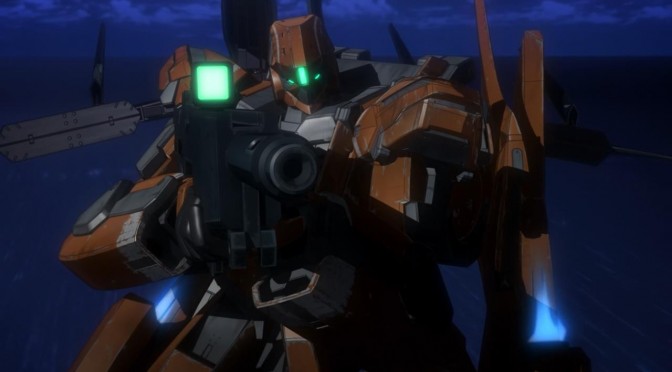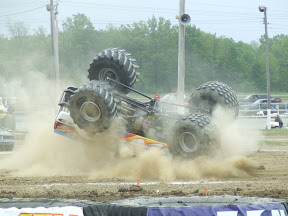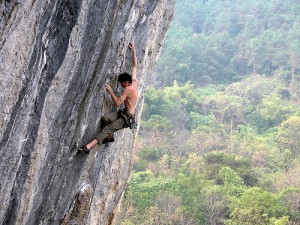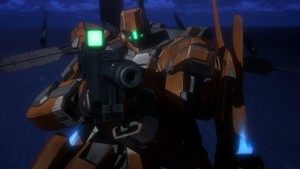Over the last couple of months, as Marvel’s next big movie geared up its hype train, one moment caught my attention more than any other. You see, I am a comic fan, but most specifically I am an Iron Man fan and have been collecting his titles for… 20 years.
Wow, I feel really old all of a sudden!
But that meant I’ve followed the Iron Man movies really closely in hope of seeing a lot of my favorite details brought to life in a new medium. And, frankly, one I’ve been waiting for since the Avengers itself was announced all those years ago was the Hulkbuster.
Look at that thing! It’s beautiful! Several tons of Hulk-punching ceramic and metal. First seen in the 90s as one of the modular upgrades to the modular armor most famous for being in a cartoon and multiple Capcom fighting games, the Hulkbuster was the first real effort by Iron Man to create a countermeasure for any of his friends being brainwashed, converted, or having their powers stolen. Many other “busters” followed, but the Hulkbuster was the first, the best, and probably the one that gives me the most joy. Because not only am I an Iron Man fan, I’m a Mecha fan to boot.
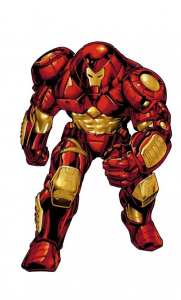
But there’s one question that always comes up, even among Mecha fans, that you don’t often hear a reasonable response to: Are humanoid mecha practical? Well…
Yes, Humanoid Mecha Can Be Practical
Now, of course, I already started this by telling you that I do actually have a bias in this regard. I love the genre and that means I don’t like it being picked at too much. However, I have also considered this a lot longer as a result and have a more nuanced position than your average fanboy which you’ll find at the end of the article where I give you the caveats that throw that “Can Be” into the header there.
A lot of people’s opinion on the subject, and I hear the debate often, is really knee jerk. Fans of the genre will try to excuse pretty ridiculous stuff to defend it, while people outside the genre will throw out some lines that really only make sense if you’re not thinking too hard about it. One of the favorites from a couple years ago was dealing with Pacific Rim and the often used line that Jaegers weren’t practical because “why not drop a nuke on it?”

Is it true that multiple nuclear detonations could probably kill the Kaiju? Yeah, totally. But what you would have following is a nuclear wasteland that can’t be inhabited by any life and probably a nuclear winter once it reached the point you were having to kill 3 or 4 of the things at a time every couple days.
Still, I will give the naysayers some credit that I can see their perspective easily. As far as design goes, the human form is far from perfect. A lot of people would argue that you could do most things seen in Mecha shows and movies using conventional vehicles like tanks or machines with a less human design. We’re not the fastest, strongest, or most versatile creatures in the animal kingdom, after all. So it would be fair to say that you could get better results out of another creature’s form.
Except…
We’re Not As Inferior As We Think
The old adage is that the grass is always greener on the other side, and it’s often true. The people who argue that other forms would make more sense are considering that other animals can do things we can’t possibly do ourselves. We’ll never be as fast as a cheetah. We’ll never be as strong as a bear. We don’t have the thick hide of a rhino. In fact, it’s pretty much guaranteed that a lone human in the wild without the proper tools or training is not long for the world. It really just takes one encounter with a predator to mark the end of our days.

But, that’s not as true as we think it is.
One of the reasons for this is that we base our ideas on how well we think we would do in the wild with our current status as somewhat content and civilized people. This ignores the fact that, not only did we once compete with lions, tigers, and cheetahs for prey – we won. That’s hard to imagine, from where we stand, but it’s no less true that when we were in the wilds of Africa and Asia we found ourselves quickly rising to the top of the food chain. A lot of this can be attributed to our intelligence, but the fact remains that we still survived for millions of years as that intelligence developed before we finally hit that evolutionary tipping point where we started to dominate fully. There was a time in our history where mankind did have to survive off its physicality.
This is hard to imagine because of the aforementioned “one encounter with a predator” issue, but one thing to remember is that the other creatures in the wild we know for a fact could kill us in a heartbeat include…other great apes. A chimp or a gorilla could easily kill a human being in a fit of rage. We know from unfortunate stories that a chimp can even rip the face off of a human in a fluid motion. They’re faster than us, stronger than us, and considerably more agile than us. But the fact remains that they’re still structurally similar to us in many ways. Two arms, two legs, these aren’t impeding them, our differences lie in something else that becomes moot when speaking of mechanical design: muscle efficiency.
A long time ago in our evolutionary history, our ancestors stopped relying on bursts of brute strength and started relying on something that could be argued to be more terrifying: endurance. We are endurance hunters by design. When ancient hominids started to seek out larger prey, they couldn’t rely on the face ripping abilities of their chimp cousins to do it, the bigger animal could rip that face a lot faster than we could. So over time we started to evolve away from being sprinters and towards being marathon runners. We would stalk our prey, for days at a time, and wait for them to be at their weakest before we strike.
We became the Terminator.
So when comparing ourselves against the rest of nature, we have to understand that. It’s something we have to keep in mind when walking our pets and something we often take for granted. We evolved to be something other than brute strength, but it’s not our form that prevents it, it’s that evolution. Understanding that, we have to realize our limitations don’t apply to something that is relying on motors rather than squishy lumps of meat. Which, of course, leads us to the argument of how our form measures up against mechanical designs.
There you’ll find that we actually have a lot of advantages, starting with…
Mobility
One limitation of many ground vehicles is the fact they have pretty strict requirements for how they get around. You need it to be relatively level, wide enough for the vehicle to have all of its base supported, and on an incline that doesn’t put too much strain on its engine. If you happen to screw any of these up…
Ground vehicles are notorious for rolling over if you go off their desired tracks. In fact, even on that track, a mistake can easily turn that supposedly friendly terrain into a death trap. And when those vehicles happen to roll over there is usually no method of getting them upright again without exiting the vehicle. Meanwhile, compare to the range of motion available to humans and you immediately see a difference in capability.
And if you happen to fall over, which is to be expected, a machine with arms can right itself with a little effort without the driver getting back out. Essentially, a humanoid machine is capable of going where other machines can’t and correcting for mistakes that other machines couldn’t. It seems like a simple matter, but when you consider the sort of jobs we use these vehicles for it can mean a vast difference. Military applications through rough terrain in strange locations would be instantly viable. A tank requires roads, but a walking machine could make its way through wilderness or mountain ranges comparatively easier.
Mind you, there would still be limitations, a great deal of weight on unstable rocks may cause those rocks to shift. But when comparing the range of motion of something like a tank, excavator, or crane, to the range of motion of something with limbs, it’s easy to see which would be able to move more freely in any terrain. And when it gets there, the number of jobs that it can do are more plentiful because our form also comes with a natural…
Versatility
A lot of arguments also fall into the range of “we have a vehicle that can do that particular job, why would we need another?” And the answer is mostly efficiency. Yes, it’s true that cranes or forklifts can be used to lift a great deal of weight. It’s also true that trucks and bulldozers can push and pull massive objects. But if you wish to do a job that requires pushing, pulling, or lifting, you’re going to need a vehicle designed to push, pull, or lift. A lot of construction sites rely on the ability to do all of the above in sequence, often. And, while it would be difficult to build a conventional vehicle that could do all of these motions when necessary, we know for a fact, from experience, that the human form can do them all when necessary. And this is why some of the first depictions of mecha in western culture outside of military applications were essentially walking forklifts.
Would it be enough to replace all construction equipment? No. The cranes can still reach much higher and easier than a humanoid machine could. But setting up the tallest cranes is already something of a hassle, and not something you’d want to do if you can avoid it. Humanoid machines, at the right scale, easily replace a great deal of equipment involved in standard construction. But another aspect of our design that we take for granted is something that I’m using right now.
It’s not usually something we consider, but machines usually have to be mounted with specific tools permanently for a specific job. If you need a large machine that drills, you’re going to build a large machine that drills and nothing else. But our hands have given us an ability over millennia which helped us get to where we are today. With a simple matter of putting down one tool and picking up another, we change our function in a snap without need for additional work. There’s no need to bolt anything on or reconnect some electrical part, just pick up a tool and do it. Put a large shovel in its hands one moment and it’s an excavator, put a gun in its hands next and it’s a tank.
There are some arguments to be made that an Octopus-like design can be made to do the same tasks, but to that you have to also understand that another key advantage is…
Familiarity
It’s true,a ll of the points before this one have been directed towards the idea that machines with limbs have advantages over machines that don’t and, from there, the argument could be made that you could get the same results out of things with many more limbs.
The argument really only works until you consider the person piloting such a machine would have to be one who could wrap their heads around the use of so many limbs. Sure, an octopus related design might be able to do more tasks at one time, but human beings aren’t capable of multitasking on that level. Despite our intelligence, we still have some difficulty doing two different things at one time without some confusion and even if we had those extra limbs we would find ourselves relying on only two more often than not. Frankly, we’re not wired for more, we’re barely wired for what we have.
Now this does lead to the idea that the mecha itself, a piloted machine that a human would be operating from the inside, might not be as effective as a multi-limbed autonomous robot. And that’s where we come to my…
Caveats
There are things about the Mecha genre that the fans don’t like to admit. There are points that, when you stop to consider them, really do start to pull at the threads and make the whole thing look a bit silly. But that’s not to say that the concept of mecha in and of itself is flawed, just that they exist and we should acknowledge them.
The first is that it would be infinitely more practical to make an automated robot that does these things for us. A computer wouldn’t have any issue with using more than 2 arms and 2 legs. They would be able to map out terrain easier and make more effective decisions than we would, and they would thus surpass humanoid mecha in versatility fairly quickly.
However, we must also acknowledge that it’s unlikely the human race would actively build a sentient machine as large as a tank and then give it a gun or a wrecking ball without oversight. Despite the fact I don’t believe AI is actually as much of a threat to us as we believe it to be, I’m realistic enough to know we wouldn’t afford it that kind of power without a hefty constraint. So while the autonomous squid-bots would be greatly efficient, it’s not likely we would give them free reign on such tasks.
Second caveat is that Mecha fans have an issue with size. Many will eagerly defend an old trope that the larger mechas are somehow always superior to smaller ones without fault. The biggest Gundams are somehow always the fastest and definitely the strongest. It doesn’t matter how heavy they are, they’re going to be lightning fast for no apparent reason. This, of course, is ridiculous and we have to admit that the bigger and heavier something is the slower it’s going to be.
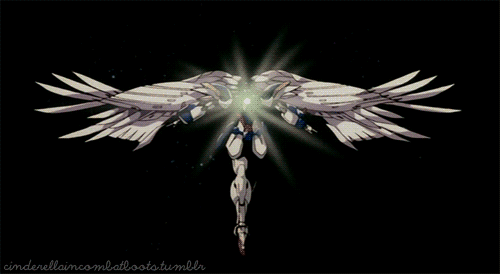
In fact, one of the critical flaws of the design of the Jaegers of Pacific Rim wasn’t even the humanoid shape, it was the size of them. Though common sense would have you believe that larger machines are naturally stronger, robotics have to consider the weight of the machine itself. The result? At a certain point the size of your machine comes back with diminishing returns on the strength. Eventually the sheer weight of the machine itself puts a strain on its ability to move and thus has to do more work for less output. This means that you could have gotten just as much impact from a machine far smaller (and, note to writers, if your protagonist is constantly having to punch up at a bigger opponent, it looks more impressive).
Honestly, given other factors around weight, power consumption, and proportion of strength to size, humanoid mecha are only practical at a certain size range. And, frankly…
That’s kind of where the genre’s logic falls apart (not that Gurren Lagann cares about logic).
(I write novels. So far none of them have mecha in them, but trust me, I have other series in mind in the future. Yes I’m a nerd, I’m perfectly willing to admit that on my twitter.)


